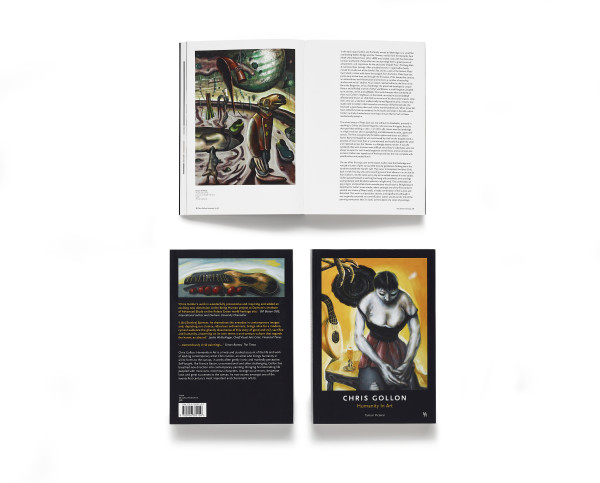-
"Chris Gollon is a masterful inventor of images. The strange freaks who people his paintings are like no other beings: they force themselves on our consciousness and dwell there, refusing to go away.”
Art historian Mary Rose Beaumont, extract from foreword to the solo exhibition catalogue Chris Gollon: Recent Paintings (Road to Narragonia series, 1997).
-
IAP Fine Art is delighted to offer The High Priest (1996), mixed media on panel, 72” x 24” (183 x 61cm).
This is a major work from Chris Gollon’s first great series of paintings on a single theme: Road to Narragonia (The Fool’s Paradise).
The painting is in pristine condition, please contact us for all enquiries and any further information.
Art historian Mary Rose Beaumont–recently interviewed for the forthcoming TV documentary being made on Chris Gollon’s life and work– was the first art critic to pick up on Chris Gollon’s work, when she featured it in ART Review magazine in 1994. She was then invited to write the foreword to the first fine art catalogue of Gollon’s work, exclusively featuring his first great series of paintings on a theme, namely the Road to Narragonia.
-

-
"The gentle but dry humour and relentless irony inherent in this painting is characteristic of his work."
Art historian and Gollon biographer, Tamsin Pickeral
-
The Narragonia series paintings are relatively rare, most being in private collections. The High Priest is also reproduced in the 2010 monograph ‘Chris Gollon: Humanity in Art’ by art historian Tamsin Pickeral, endorsed by Bill Bryson OBE.
She writes:
" ... the paintings have a sense of metaphysical, and to a lesser extent physical movement; they transpire and unfold across a surreal terrain, loosely following an esoteric road. […] The source for these green and white spotted clothes traces back to Gollon’s school days and to an unfortunate friend whose eccentric father typically undertook the school run wearing a green and white spotted dressing gown, secured with a belt from which hung a hot water bottle.
The gentle but dry humour and relentless irony inherent in this painting is characteristic of his work. These elements lend his paintings poignancy and allows the artist to depict subjects from the basement of human experience, whilst maintaining a balance between pathos and humour that, with rare exception, prevents his subjects from becoming either blatantly cartoonish, or hellishly without hope. Depiction of humanity, in all its forms of weakness, strength and the diabolical, has, since the Narragonia series of paintings, been a fairly consistent theme throughout Gollon’s work. His approach is heavily steeped in irony, with an appreciation of the ridiculousness of human situations, mostly self-induced, but with a definitive empathy. He might paint humorous and/or disadvantaged characters, but he does so without mockery, suggesting instead a genuine sincerity and understanding that encourages the viewer to identify with, and appreciate, the subject matter with sensitivity."
-
"Chris Gollon also loved Fellini’s films and in particular Amacord, even owning a recording of the film’s soundtrack. He loved Fellini’s absurd human situations, peopled with mysterious characters and parallel narratives, which inexplicably cohered through music.
David Tregunna, from the foreword to the museum exhibition catalogue CHRIS GOLLON: Beyond the Horizon (2019)
-

Chris Gollon in his studio, circa 1997 © Janine Rook





